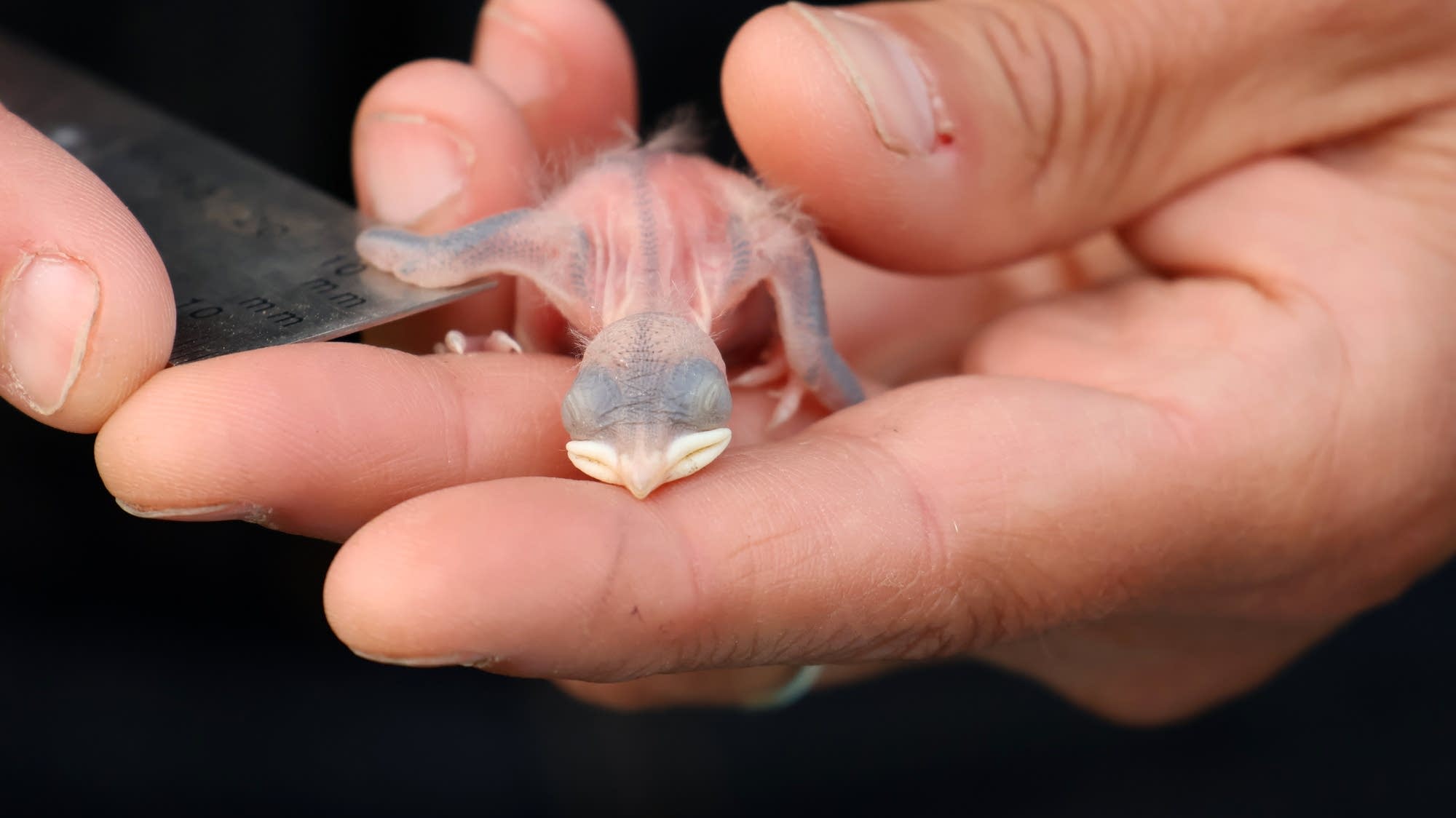
Early on a cool, smoky June morning researchers Alexis Grinde and Annie Bracey load up with gear and strike out throughout a grassland south of Moorhead, Minn.
They’re gathering knowledge to raised perceive how altering climate is likely to be affecting vitamin for aerial insectivores, birds that catch bugs in flight.
Many research have proven declines in hen populations and dwindling insect populations. As a wildlife ecologist on the College of Minnesota Pure Sources Analysis Institute in Duluth, Grinde needs to raised perceive the connections between birds and bugs.
Picket nesting packing containers are arrange on posts throughout this grassy subject to draw tree swallows, the themes of this examine.
Develop the Way forward for Public Media MPR Information is supported by Members. Items from people energy every little thing you discover right here. Make a present of any quantity right this moment to grow to be a Member!
Minnesota researchers are attempting to know the connection between declines in hen populations and modifications in insect populations. Dan Gunderson | MPR Information
“I’ll stroll up examine the field, seize an grownup, after which we’ll put an RFID on it,” mentioned NRRI avian ecologist Annie Bracey. The grownup swallow disappears in her hand, solely its greenish blue head exhibiting as she clips an identification band on one leg and a small yellow tag on the opposite.
The yellow tag will set off a scanner that encircles the opening the swallows use to enter and go away the nest field.
“It’s sort of like a bar code scanner to estimate provisioning charges of the adults, to see how usually they’re visiting the nest and utilizing that as an index of feeding for his or her younger,” defined Bracey.
This data is essential to the query these researchers are attempting to know.
Whereas lack of habitat is an element within the decline of aerial insectivores, bugs are a essential meals supply and modifications in insect populations are thought to considerably contribute to the declining hen numbers.
Avian ecologist Annie Bracey releases an grownup tree swallow after outfitting it with a radio frequency identification tag. Dan Gunderson | MPR Information
A vitamin mismatch
The idea is that altering climate patterns are inflicting a mismatch, between the birds migration and breeding cycles and the supply of bugs they depend upon for meals.
Grinde factors to spring climate lately with large swings from heat to chilly. That may considerably change when bugs hatch and in the event that they survive to grow to be meals for birds.
“That has large penalties for what the birds are doing and what their potential productiveness for the season is,” mentioned Grinde. “And if we’re not making extra birds right here throughout the breeding season, there’s not going to be a inhabitants enhance ever.”
At the very least one examine has discovered tree swallows are getting smaller, maybe in response to the results of local weather change on their weight loss program.
Alexis Grinde fastidiously returns a tree swallow to the nest after it was weighed and measured. Dan Gunderson | MPR Information
After weighing and measuring the grownup hen, Bracey fastidiously removes a half dozen tiny not too long ago hatched birds from the nest. They’re 4 days outdated with no feathers, just some wisps of down on their naked pores and skin.
Working rapidly to verify the nestlings are safely dealt with and don’t get chilled, the researchers weigh and measure the tiny birds to doc their progress and gather fecal samples.
DNA evaluation will inform them what bugs grownup birds are feeding the infants.
Bugs are additionally being collected right here all through the breeding season to know the connection between the emergence of bugs on the panorama and what the birds are consuming.
Gathering bugs all through the tree swallow breeding season will assist researchers perceive if bugs can be found when birds most want the vitamin. Dan Gunderson | MPR Information
“Determining what is going on on with these dynamics, how briskly the nestlings develop, what number of survive, how does that relate to meals availability, it is an enormous subsequent step in ecology,” mentioned Grinde.
The analysis websites vary throughout completely different landscapes in western Minnesota, from agricultural land to grasslands to a mixture of the 2 kinds of land use.
The researchers deliberate to additionally examine japanese bluebirds which can nest close to tree swallows, however they have not discovered that species within the examine space during the last two years. Grinde is just not certain why bluebirds are absent, however they’re additionally a species in decline.
Crucial questions
There hasn’t been a lot analysis trying on the interface between altering insect populations and breeding insectivores, mentioned Grinde, however it’s essential to understanding the way forward for these birds.
“They’re coming to Minnesota to breed within the month of June. They usually’re coming right here for the bugs as a result of there is a ton of meals, meals is just not scarce,” she mentioned.
Plentiful meals obtainable on the mistaken time within the breeding season might be vital.
“That is an actual downside as a result of the mothers not going to have the ability to get sufficient meals to truly lay the eggs. The nestlings aren’tgoing to get sufficient meals or they are going to be delayed in how a lot meals that they are getting,” mentioned Grinde.
“When you do not have that buffet that you just got here right here for it may get sort of tough and that may undoubtedly have an effect on the vitality they need to put into breeding.”
That is the second and last yr of knowledge assortment for this challenge funded by the Surroundings and Pure Sources Belief Fund. Grinde hopes to proceed the work as a result of long run monitoring of birds and bugs can present essential insights on the results of a altering local weather.